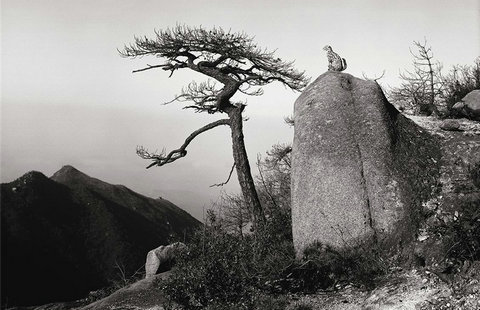The 'nightmare' everyone saw coming
Updated: 2015-05-01 10:01
By Christopher Davis(China Daily USA)
|
||||||||
When earthquake specialists gathered in Nepal's capital city of Kathmandu last week for a seminar on how to better prepare for a 'a nightmare waiting to happen', they had no idea how soon disaster would strike the country, reports Christopher Davis from New York.
During the week of April 19, seismologists from around the world met in Kathmandu, the capital city of Nepal, to talk about what one scientist called "a nightmare waiting to happen". It was right under their feet.
The scientists knew there was an overwhelming amount of costly work that needed to be done to prepare the poor, congested, overbuilt city for the next big earthquake. And they felt certain they were racing against Nature's capricious clock.
They were. Just before noon on the following Saturday a 7.8-magnitude earthquake struck, burying people in collapsed masonry and landslides, toppling treasured shrines, unleashing avalanches that wiped out climbers on Mount Everest (known as Mount Qomolangma in China) and wreaking the kind of calamitous havoc the scientists had feared. And knew was coming.
It's called the Indus-Yarlung suture zone, the interface of two continents - India and Asia - butting heads, with India being forced beneath China, subducted into the role of building the Himalayan mountain range.
The process has been going on for 45 million years and proceeds at a stop-and-go pace of about 2 centimeters a year, roughly the rate that human hair and nails grow, but not as steadily. It's a jolt forward followed by a rest period that builds up the compression for the next jolt.
The slight lurch forward is an earthquake and since 1255 AD, records kept in the region show that a major quake of magnitude 8 or above has happened about every 75 years. The last one in 1934, measuring 8.1, killed nearly 11,000 people and destroyed 40 percent of the buildings in the area.
Kathmandu has changed a lot in the 81 years since then. But the teeming metropolis of shoddily constructed buildings wouldn't stand a chance against a temblor. Even a quake less than the overdue magnitude 8 would probably produce numbers worse than 1934's tragedy.
"Simply applying the percentage of the population killed or injured in the 1934 earthquake to the population of the [Kathmandu] Valley today results in an estimate of 22,000 deaths and 25,000 injuries requiring hospitalization," said a 1998 report by the US-based NGO GeoHazards International. "Applying more recent earthquake casualty figures from cities comparable to the Kathmandu Valley results in an estimate of 40,000 deaths and 95,000 injuries in the [valley's] nest earthquake."
Inevitable questions
As the body count continues to mount in Nepal, the inevitable questions were raised. Why is it we can be sure where an earthquake will strike but not know when? Are we any closer to being able to read the ticking clock on Nature's time bombs?
Ben van der Pluijm, a professor at the University of Michigan, specializes in what he describes as the interface of geology and society, and preaches the resilience of humanity in the face of the most abrupt and adverse change brought on by earthquakes, volcanic eruptions and storms. Geology, to him, tells a whole lot about what might take place, but not enough.
For several decades, science has had a good understanding of where to expect major earthquakes to occur, he said. The evidence and events link up "very tidily with plate tectonics, where we find 99 percent of all these events are related to what we call plate boundaries, where two plates are moving relative to each other. Geologically we have found a remarkable pattern that explains the occurrence of these particular events," he said.
Very large earthquakes like the one that hit Nepal have a kind of system, he explained. They aren't very common to begin with - only a handful - three to five - are expected each year, but they are disastrous when they occur in populated areas.
Nepal is in a location that is expected to have such an earthquake, he said, but "just because you understand a lot about the geology and the setting and the likeliness and the location, we are much less sure about when things will happen."
Trying to get close to actually predicting the timing, he said, is "where the paths of understanding are really important to realize. Geology does not give us the time detail we as human society are looking for." The Earth's crust is not running on the human clock; it's running on the geologic clock. "People think 100 years is a staggering amount of years, but it's an absolute trivial amount of years in the geologic context," he said.
Predicting earthquakes, according to Robert J. Geller, professor of earth and planetary science at the University of Tokyo's Graduate School of Science, "seems to be the alchemy of our times".
Scientists are working on "seismic weather reports", as one observer put it, which are more a mathematical update in shifts in probability than any kind of reading.
"There is no machine we can put down there and then say when an earthquake is going to happen," van der Pluijm said.
At various venues and laboratories, scientists have tried to use changes in radon gas emissions from the ground as an indicator or looked for epidemic-like patterns in seismic activity to predict the spread of aftershocks as if it were a plague. Estimates count anywhere from 400 to 5,000 models for predicting earthquakes being tested and explored worldwide.
"It's very hard to do a conclusive test," said Professor Norm Sleep, a geophysicist at Stanford University. "If I was empirically predicting weather, I could get a lot of experience in a year. In Nepal, it occurs every 75 years. So to get a lot of experience on this is going to take a good while to do better than just say what the bus driver can tell you."
Useful prediction
For a prediction to be useful, Sleep said, it has to be in a relatively short time and has to specify the magnitude and location. "A prediction that there's going to be a magnitude-8 earthquake this year somewhere in the world is probably true, but not particularly useful," he said. "Everybody in the world can't camp outside for a year."
"Basically everybody's equally good at predicting earthquakes, which means that nobody's good at it at all," he said.
Sleep said prognosticators could do considerably better than chance and still not be of any service. "If you said the chance that one coming in 2015 rather than being one in 75 was one in 30 of getting this earthquake in Nepal, you've doubled the risk but you haven't really changed how people react to it."
The vast interface of India and Asia is what scientists call a "belt" of seismic activity. Everywhere along it India is trying to work its way under China. So everywhere along it, earthquakes are inevitable.
"If there hasn't been one in quite a while we can expect that to be the place where the next earthquake happens," said van der Pluijm. "It's called the 'seismic gap theory'. When there has not been an earthquake in a certain place while we know that the process that generates earthquakes is taking place, we can say that is a more likely place for the next event to take place."
Large earthquakes in similar areas over the past decades are also a dead giveaway. But nearby earthquakes can also throw off a prediction. In the case of Nepal, Sleep said, "you go back in the record and they're occurring on average every 75 years but not precisely every 75 years. A large earthquake nearby Nepal might change the recurrence interval because we've changed the stresses of the Earth."
And nearby earthquakes can also add stress to the one in focus, hurrying the event along. "A small earthquake doesn't relieve the stresses a lot but it can be a foreshock, where it's adding stresses very nearby the earthquake," Sleep said. "A magnitude 5 releases about a 30th of the energy of a magnitude 6, and so on. So this earthquake released over 20 times more energy than the earthquake did in Haiti."
How can that amount of energy be described in non-earthquake terms? "People have used H bombs, but it's so large that nothing is particularly helpful," Sleep said. "This earthquake was about the size of the 1906 San Francisco earthquake, but the energy released there was spread over a larger distance. Again both earthquakes were not particularly good for structures."
James Jackson, a University of Cambridge-based seismologist who was among the scientists in Kathmandu the week before the earthquake, told The Associated Press, "The construction is appalling in Kathmandu." But he acknowledged that it made sense in a country where nearly a quarter of all people live below the poverty line and build what they can with what they have.
Other priorities
"If you live in Kathmandu Valley you have other priorities, daily threats and daily nasty things happen to you in terms of air quality, water quality, pollution, traffic and just poverty," he said. "But it doesn't mean the earthquakes go away."
Masonry buildings that are not reinforced are highly vulnerable to collapse in earthquakes and when they do collapse, they kill a lot of people, Sleep said. "It's difficult enough in the US to get people to refit buildings and in an area that's impoverished it is even more difficult," he said. "I'm not an engineer, but I do know how not to build a building."
In a book entitled Earthquake Hazard, Risk, and Disasters members from the National Society for Earthquake Technology noted Nepal's lax building codes had only increased the destruction that might be caused by an earthquake. They wrote:
"No system exists for controlling the professional standards of engineers/designers through reference to professional qualifications/membership, peer review processes, or by legal means. Further, the owner builders, who follow the advice of local craftsmen and mason leaders, build a significant proportion of the buildings in Nepal.
Neither the owner builder nor the crafts persons are aware of the possible disastrous consequences of an imminent earthquake. They do not have adequate access to information related to safer building practices and incorporation of simple earthquake-resisting features at nominal extra costs.
Even building construction projects funded by national and multilateral agencies generally do not spell out adequate requirements related to seismic safety in their terms of reference to their consultants."
Van der Pluijm thinks people should be aware that predicting earthquakes is a two-sided coin: "Even though we can't give the exact date and time, we can tell you the things to expect, and landslides is one of the things that were predicted once we had an earthquake for that area. And of course the tragedy is the landslides are making it very difficult to have rescue efforts underway."
The same is true with buildings, he said. He used the analogy of putting a building on top of a skateboard and then kicking the skateboard suddenly. If the building is not well built, it topples over.
"That's what happens with these buildings," he said. "There's a lot of aggressive, quick motion of the ground and buildings when they're not engineered to withstand ground motion have no chance. And people live in buildings and this is why the injuries happen."
Sleep noted that in the Haiti earthquake, the US and Canadian embassies, which were built to earthquake code, went virtually unscathed. Haiti, like Nepal, is basically denuded of wood so there isn't the material to build wood-frame and plaster structures that cause fewer injuries when they're shaken into collapse.
"It's not a problem of ignorance, it's a problem of resources," Susan Hough of the United States Geological Society said. "People are building houses to live in with the resources that they have. They can't afford rebar and engineering."
Sleep said that earthquake codes do a lot of good. "There's no such thing as something being totally earthquake proof, but levels of shaking increase very rapidly as you go to stronger and stronger shaking, so any improvement you make buys you a lot of good," he said.
Van der Pluijm said that the issue really is humans interacting with geology. "We have to come to grips as a society on how to respond to the impact of these events. We predict for you what will happen, we can tell you the ground motions, we can tell you what buildings to build. They're very expensive, of course and these are very poor countries," he said.
"It sounds very preachy to say this because I realize these people have daily suffering that exceeds ours even on a regular basis," he continued. "That is the scary part: these buildings have no chance. They are not built to withstand anything. That is why probably unfortunately we'll hear about a lot more death and suffering as the days go by and they discover more villages that were impacted and destroyed by this process."
"These are incredibly damaging events, these earthquakes. They are huge events."
Continents on the move are now tracked by GPS and their longer paths can be measured by analyzing the magnetic anomalies at the ridge edges, getting spreading rates and then laying it over the geometry of a sphere. The Nepal event moved the Himalayas about 2 meters higher, but erosion and landslides are already working to reclaim that gain in height.
The reason the Himalayas are there is exactly because of earthquakes like this," said van der Pluijm. "And there will be more coming."
Through telemetry, all of the data is fed in real time into data bases in laboratories all over the world and will be analyzed. "It's no longer the days when you had to write to monasteries and they'd send you seismograph readings over a several-year period," Sleep said.
This event will be added to the data base and be "just one more thing out of many," Sleep said, "and we're not going to able to predict earthquakes on what they learned from this one, unless someone gets awful more lucky than I think they will."
Contact the writer at chrisdavis@chinadailyusa.com

|
A resident woman sits and prays on the street in front of a destroyed historical site in Katmandu on Tuesday after a magnitude 7.8 earthquake struck Nepal. Chen Jie / For China Daily USA |

(China Daily 05/01/2015 page20)

 Across Canada (May 1)
Across Canada (May 1)
 China's top 10 GDP provinces in Q1
China's top 10 GDP provinces in Q1
 Photos capture marvelous landscapes of China
Photos capture marvelous landscapes of China
 Mass exodus from Kathmandu
Mass exodus from Kathmandu
 Running on water: a nearly impossible feat
Running on water: a nearly impossible feat
 Ten photos you don't wanna miss - April 30
Ten photos you don't wanna miss - April 30
 'Comfort women' survivor attends protest of Japan PM
'Comfort women' survivor attends protest of Japan PM
 Ten photos you don't wanna miss – April 29
Ten photos you don't wanna miss – April 29
Most Viewed
Editor's Picks

|

|

|

|

|

|
Today's Top News
Abe betrays history's conscience
Vancouver property developer identified as Chinese fugitive: report
Freddie Gray tried to hurt himself in police van
China trainmakers seek control of Bombardier's rail unit
New rich set sights on tech, media and telecom sectors
US rapped for stance on Japan
Obama, Abe talk much about China
Japan PM protested at US Capitol, San Francisco
US Weekly

|

|







